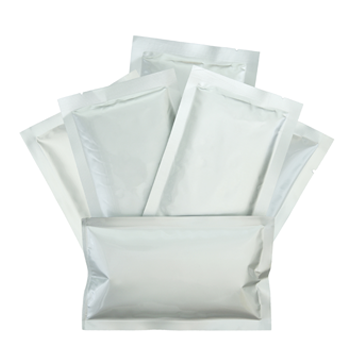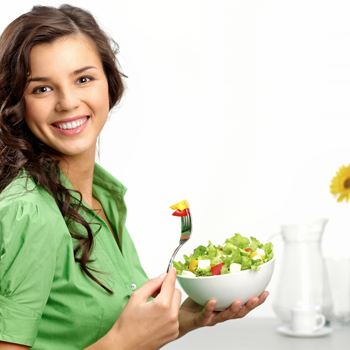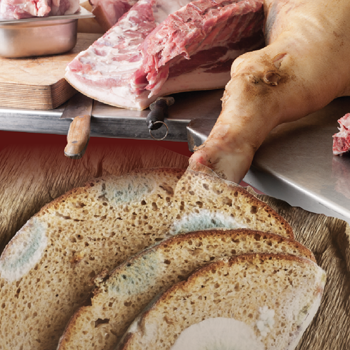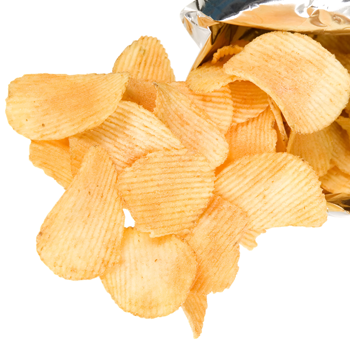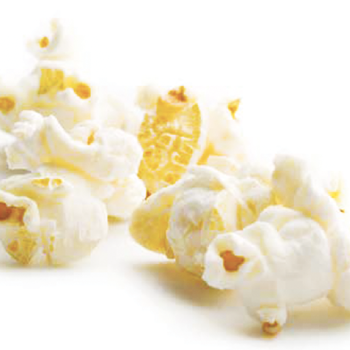
เนรมิตวัตถุดิบด้อยค่า…ให้เป็นสินค้ามีคุณค่า สมราคา
โดย: สหัส รัตนะโสภณชัย
Sahas Ratanasoponchai
Assistant Vice President: Hygiene Business
Betagro Group
sahas@betagro.com
Full article TH-EN
กระบวนการผลิตในโรงงานอุตสาหกรรมส่วนใหญ่มักประสบปัญหาเรื่องของวัตถุดิบเหลือใช้ วัตถุดิบตกขนาดหรือข้อกำหนดหรือคุณภาพบางประการที่ไม่เป็นที่ต้องการของลูกค้า ทำให้ต้องทิ้งและเสียเวลาคัดเกรดวัตถุดิบเหล่านี้ อีกทั้งยังทำให้มีโอกาสเป็นแหล่งปนเปื้อน เพิ่มความเสี่ยงด้านความปลอดภัยในสินค้าแก่ผู้บริโภคมากขึ้น
การคัดแยกวัตถุดิบดังกล่าว อาจแยกได้ดังนี้
1. วัตถุดิบที่มีคุณภาพและข้อกำหนดเดิมทุกประการ แต่เหลือจากกระบวนการผลิต ซึ่งถือเป็นการสูญเสียอย่างมาก เศษวัตถุดิบนี้จึงยังมีคุณค่ามหาศาล เพียงแต่ว่าเราจะนำไปแปรรูปอย่างไร หลายโรงงานจึงนำไปทำเป็นสินค้าใหม่ที่เพิ่มมูลค่า โดยต้องมีการเสริมสารหรือกระบวนการผลิตอย่างอื่นลงไป เช่น การผลิตน้ำผลไม้ให้มีหลากหลายรสชาติ มีส่วนผสมของน้ำผลไม้หลากหลายชนิด แต่ยังคงคุณค่าไว้ครบถ้วนทุกประการ
2. วัตถุดิบที่มีคุณภาพ แต่เป็นเศษที่ไม่ได้ขนาดตามข้อกำหนดบางประการ สามารถนำไปแปรรูปเป็นรูปแบบอื่นๆ เพื่อให้ได้คุณภาพตามความต้องการของลูกค้าหรือผู้บริโภค เช่น การแปรรูปเนื้อสดที่ไม่ได้ขนาด มารวมกันปั้นเป็นสินค้าใหม่ เช่น ลูกชิ้น หรือไส้กรอก เพื่อให้ได้สินค้ารูปแบบใหม่ตามใจผู้บริโภค แต่มีคุณค่าครบถ้วน
3. วัตถุดิบที่มีคุณภาพ แต่เป็นส่วนที่ไม่ต้องการในกระบวนการผลิตนั้น การนำแนวคิดใหม่ๆ เพื่อพัฒนาสินค้าให้มีความแตกต่างจากผู้ผลิตรายอื่นจึงเป็นทางเลือกในการสร้างคุณค่าสินค้าใหม่ เช่น นำคางกุ้งมาแปรรูปเป็นสินค้าเฉพาะชนิด เฉพาะกลุ่มลูกค้า หรือการแปรรูปไข่ขาวหลอดให้เป็นแบบเฉพาะกับกลุ่มลูกค้านักกีฬาที่ต้องการโปรตีน
4. วัตถุดิบที่ด้อยคุณภาพไม่ได้ตามข้อกำหนด ซึ่งสามารถแยกได้เป็น 2 ประเด็น คือ
4.1 วัตถุดิบด้อยคุณภาพ แต่ยังคงมีความปลอดภัยต่อผู้บริโภค ได้แก่ วัตถุดิบที่ไม่ได้ตามข้อกำหนดลูกค้า การคัดเกรดเพื่อนำไปแปรรูปให้กับกลุ่มลูกค้ากลุ่มใหม่ เช่น ลดความเข้มข้นลงในน้ำผลไม้ หรือการผลิตเป็นเนื้อไก่คาราเกะที่ยังคงความปลอดภัยต่อผู้บริโภค
4.2 วัตถุดิบด้อยคุณภาพ แต่ไม่มีความปลอดภัยต่อผู้บริโภค สถานการณ์นี้แท้จริงแล้วคือ การต้องคัดทิ้ง ไม่สามารถนำมาใช้แปรรูปได้ เพราะจะเป็นความเสี่ยงเกินไป เช่น การพบเชื้อจุลินทรีย์เกินมาตรฐานที่กำหนดไว้ แม่ว่าการใช้ความร้อนจะทำลายเชื้อจุลินทรีย์ได้ แต่ไม่มีใครทราบถึงอันตรายที่อาจเกิดจากการทำลายได้ไม่หมด หรือมีสารพิษจำพวกท็อกซินตกค้างอยู่ได้
One recurring problem facing most productions in large-scale factories is the problem concerning raw materials, whether it be the leftover raw materials, undersized materials or materials that don’t meet with customers’ requirements. These raw materials are not only a waste of money, but also a waste of extra screening time. Besides, they can also be sources of contamination that post risks on the products’ sanitation and safety.
These problematic raw materials can be classified as:
1. Raw materials leftover from production process that are still of good quality and specification. To throw away these valuable materials would be a huge waste of money, so many factories, by ways of adding other substances or further processes, turned them into new value-added products such as multi-flavored drinks with multiple fruit juices, with all the nutrition fully preserved.
2. Raw materials that are of good quality but not at the required or specified sizes. These raw materials can be processed differently and turned into new products that meet with customers’ or consumers’ demand, with all the nutritional values intact. For example, undersized meat of different kinds can be used to make meatballs or sausages.
3. Unwanted or unused parts of good-quality raw materials that are casted away from production process. New ideas were brought into developing new products that are different and distinctive, to be the new interesting alternatives for consumers. For example, shrimp chins were modified and processed into a new product for niche market, or egg white tube that was developed for the athlete consumer group that needs protein from egg whites.
4. Low-quality raw materials that are not up to the requirements can be categorized into 2 groups:
4.1 Low quality but safe. These raw materials are safe for consumers but are screened off for not meeting customers’ requirements. Additional sorting is needed to be done before these raw materials can be further processed into new products, e.g. a new, less-concentrated fruit juice or chicken karaage that is safe for the consumers.
4.2 Low quality and unsafe. These raw materials have to be discarded right away; no further use can be made of them, for hygiene and safety reasons. For example, raw materials that are found to contain microorganisms exceeding the standard level, though can be destroyed by heat may still carry some unknown harmful toxin.


